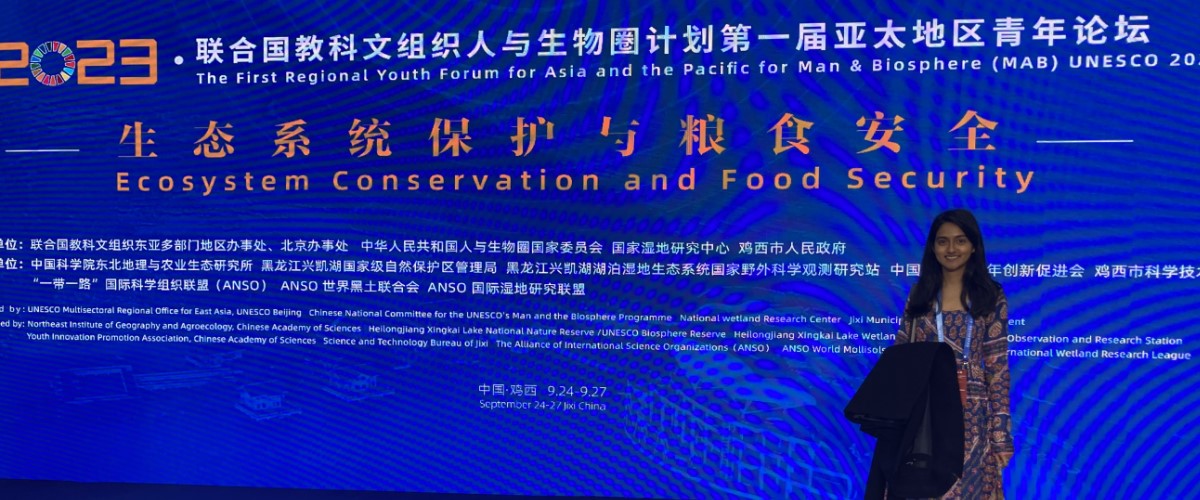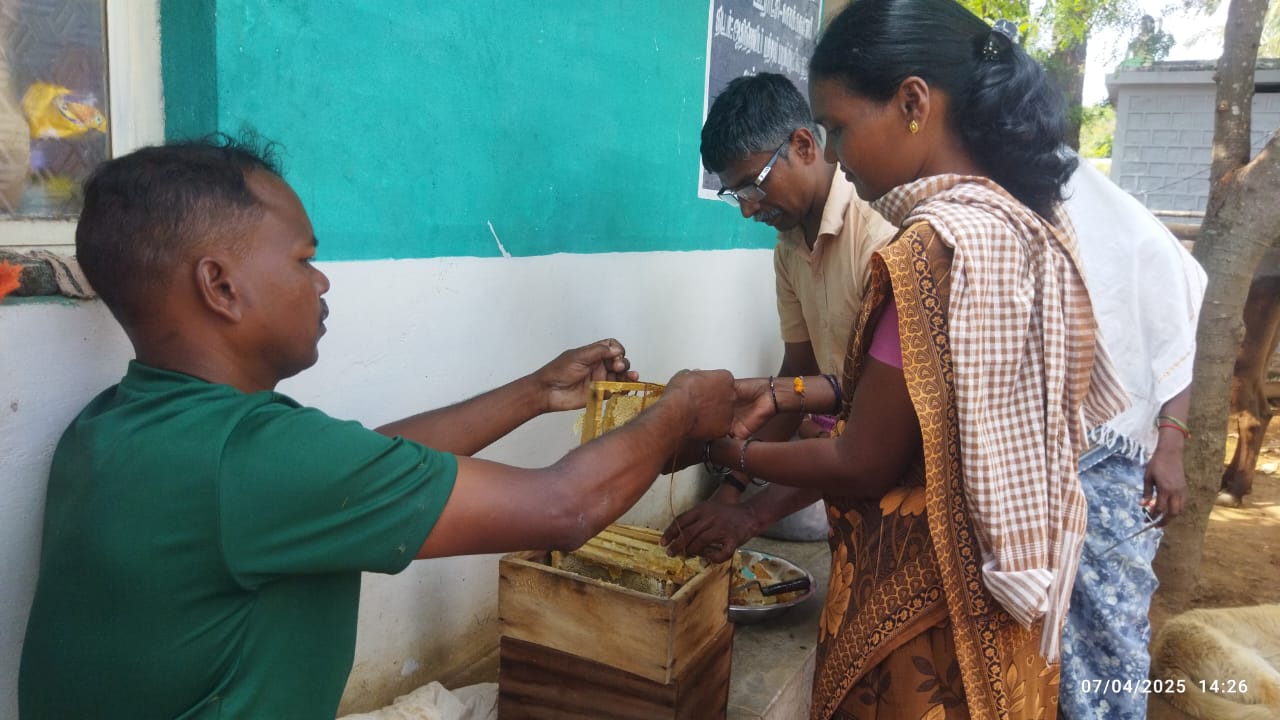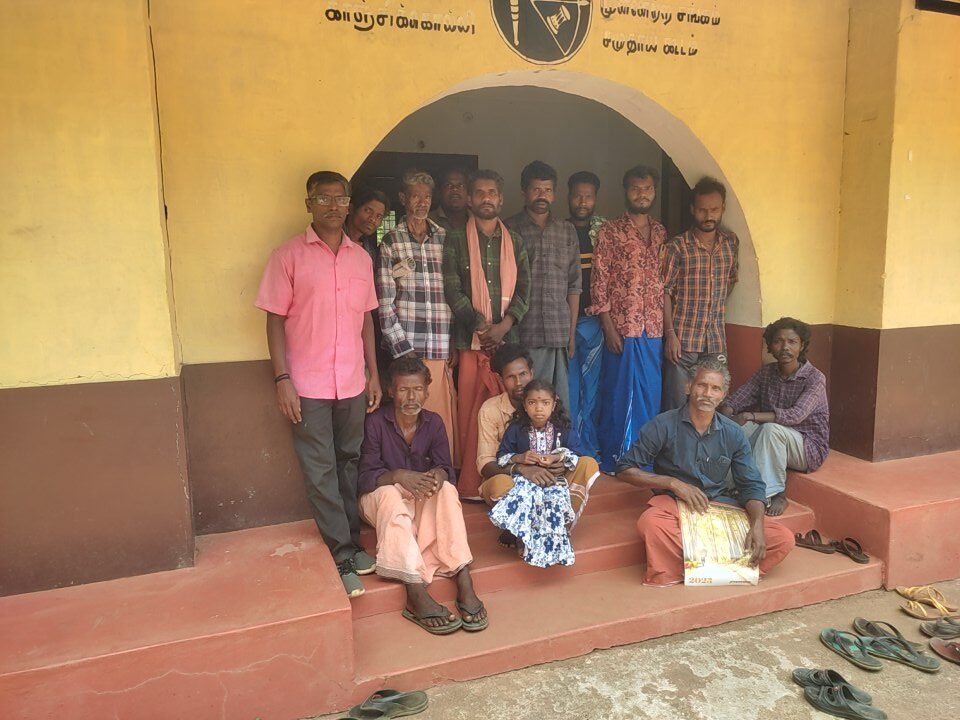September 28, 2023
By Divya Kilikar
Communications Coordinator, Organisational Development
This month, Keystone was invited to the 2023 Regional Youth Forum (Asia-Pacific) of Man and the Biosphere Programme under UNESCO – the first such event since the pandemic. Held from September 24 to 27 in Jixi, Heilongjiang province, China, the conference brought together 130 participants from 27 countries in Asia, Africa and eastern European regions, including Pakistan, Bangladesh, Kenya, Ukraine, Nigeria, Rwanda, Thailand, Vietnam, Malaysia, Korea, Japan, Romania, and Indonesia. These were students of all levels from undergraduate to PhD, along with researchers, conservationists, and journalists. The theme for this year was ‘Ecosystem Conservation and Food Security’.
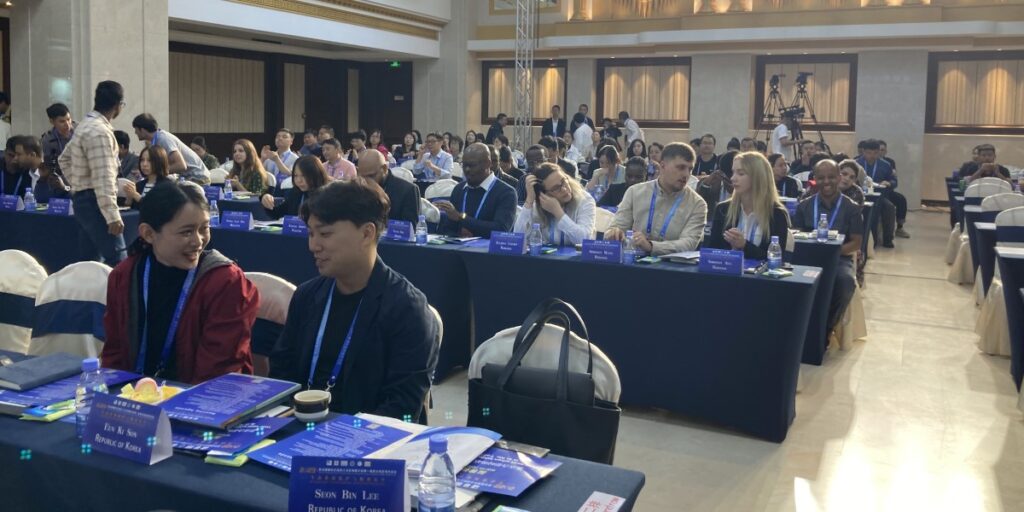
The Man and the Biosphere programme was launched in 1971 to facilitate intergovernmental collaborations in recognising, preserving, and improving relationships between people and nature. Since then, the MAB has been pivotal in the declaration and management of 748 biosphere reserves across the world. The Nilgiri Biosphere Reserve was one of the earlier reserves – and India’s first – declared by the MAB in 1986. Divya Kilikar, communications coordinator, attended the conference on behalf of Keystone, which was the only representative invited from India.
On Sept 25, there were flash talks by several renowned individuals: Shahbaz Khan, Director of UNESCO Multisectoral Regional Office for East Asia; Xian Yijie, Secretary of Chinese National Committee for Man and the Biosphere Programme; and Jiang Ming, Director General of Northeast Institute of Geography and Agroecology, Chinese Academy of Sciences were some of them. Following lunch, the participants were assigned to three breakout rooms for more personal discussions and paper presentations based on interest: climate change, biodiversity, and food security.
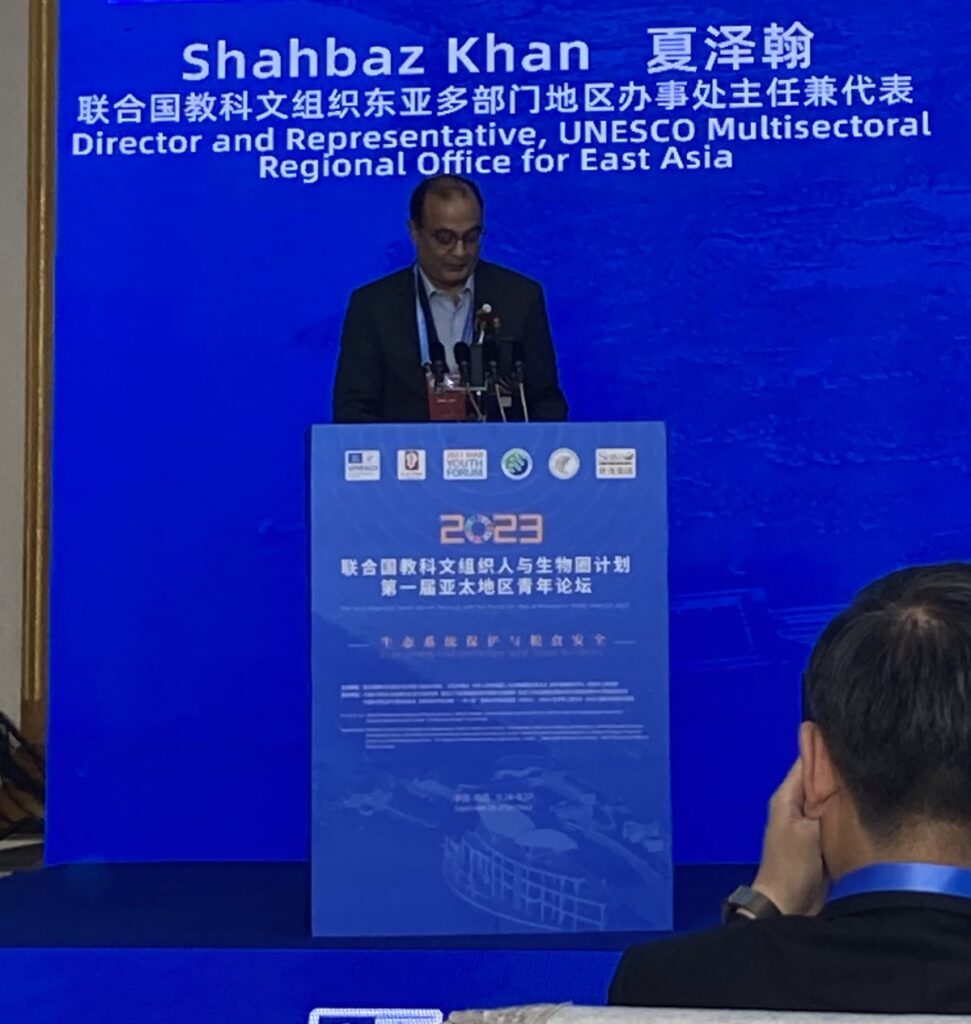

On Sept 26, we left early on a field excursion to Xingkai lake, a transboundary lake shared by Russia and China, which is Jixi’s biggest attraction. This ecosystem was the inspiration for Jixi city being chosen as the location for the conference. The Xingkai Lake Biosphere Reserve was declared in 2007 to protect the diversity of migratory birds frequenting the lake throughout the year. We visited the lake museum, which provided insight into the biodiversity and history of the lake, and displayed impressive figurines of avian species. We also got the opportunity to go boating on the lake, and later visit the science station, where we were given a demo of the bird monitoring equipment used by the researchers.
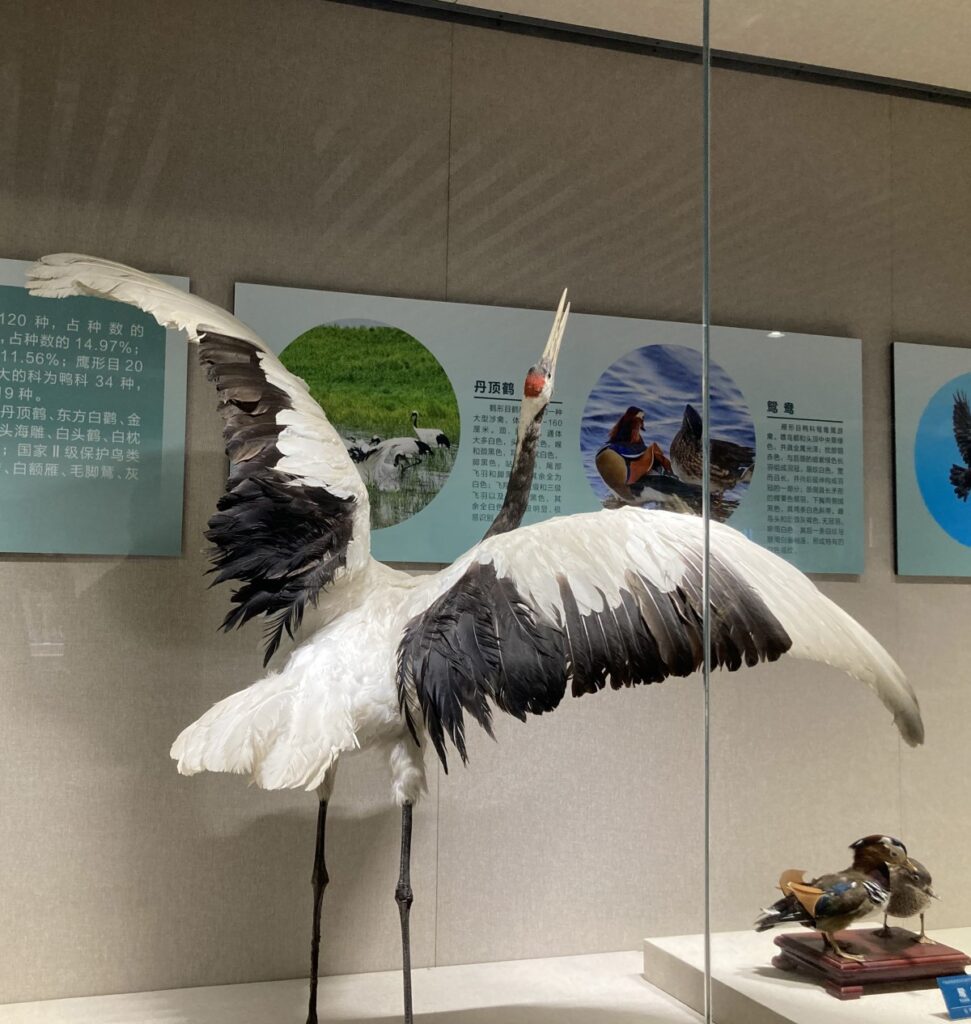
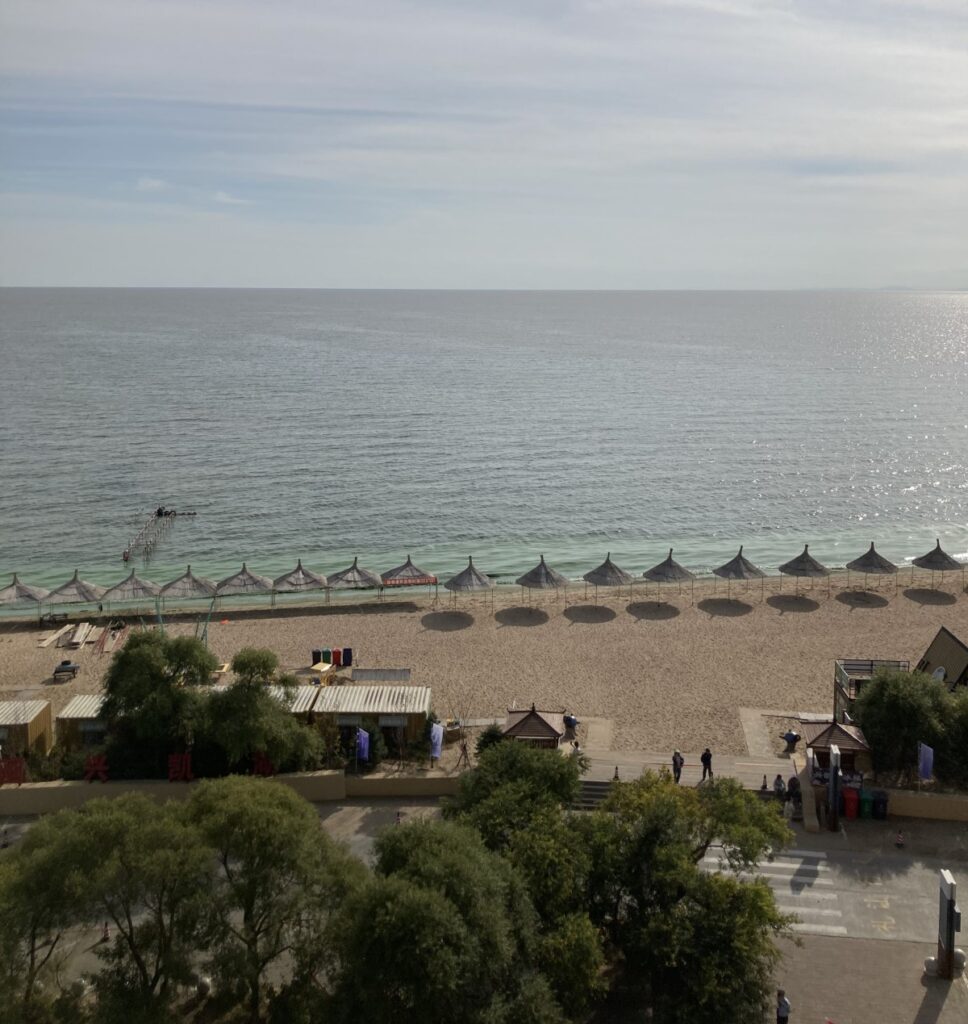
This conference provided me with the generous opportunity to reflect more widely on the Nilgiris, having now been introduced to a biosphere reserve in a very different ecosystem, region, and cultural/political context. The experience was unexpected in many ways – for example, in India, where protected areas are so sacrosanct and laws so strict (despite the dilution of the Environmental Impact Assessment in the last few years), you would not find as much infrastructure close to the core areas. However, erected on the banks of Xingkai lake which was sandy, were large umbrellas, beach chairs and food stalls that were inactive as we approached winter. And a few metres further away was a colossal two-floor wooden structure that served as a viewpoint, where one could see as far into the lake as the eye would allow. There was also the museum and science station that were doing a splendid job of raising awareness of the lake while also studying it. When it comes to India’s protected areas, however, only a very select few would have laid their eyes on core areas. It made me ponder the extent of ‘relationship’ that people and nature could and should have in a biosphere reserve, and how the answer may differ across reserves around the world. Could the Nilgiris be distancing people from nature too much? Could the banks of the Xingkai lake benefit from more space from people and urbanisation?

